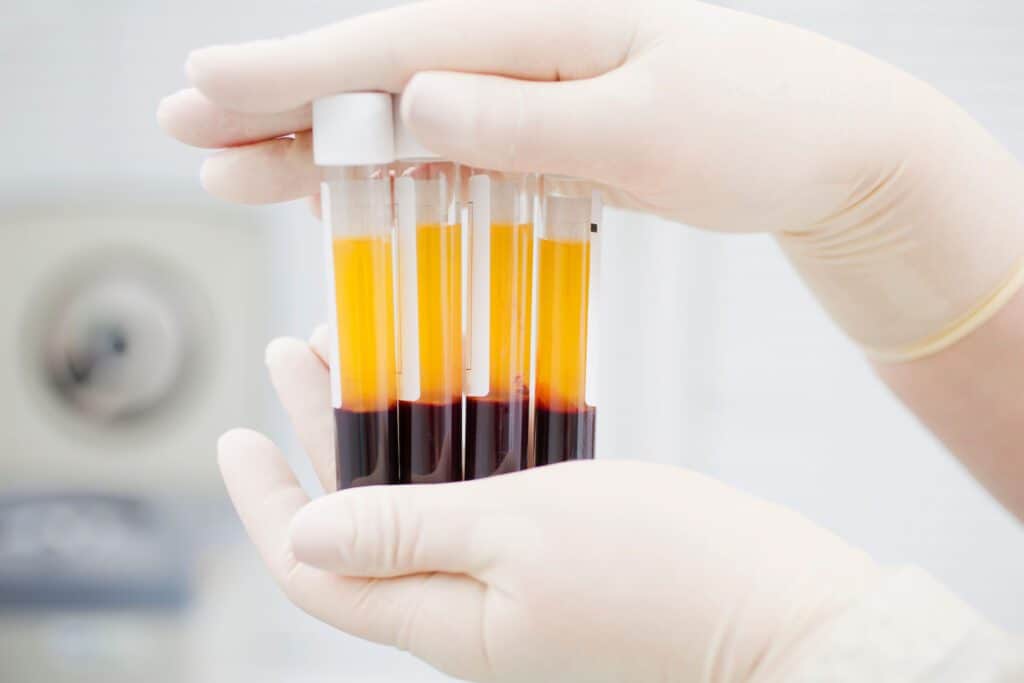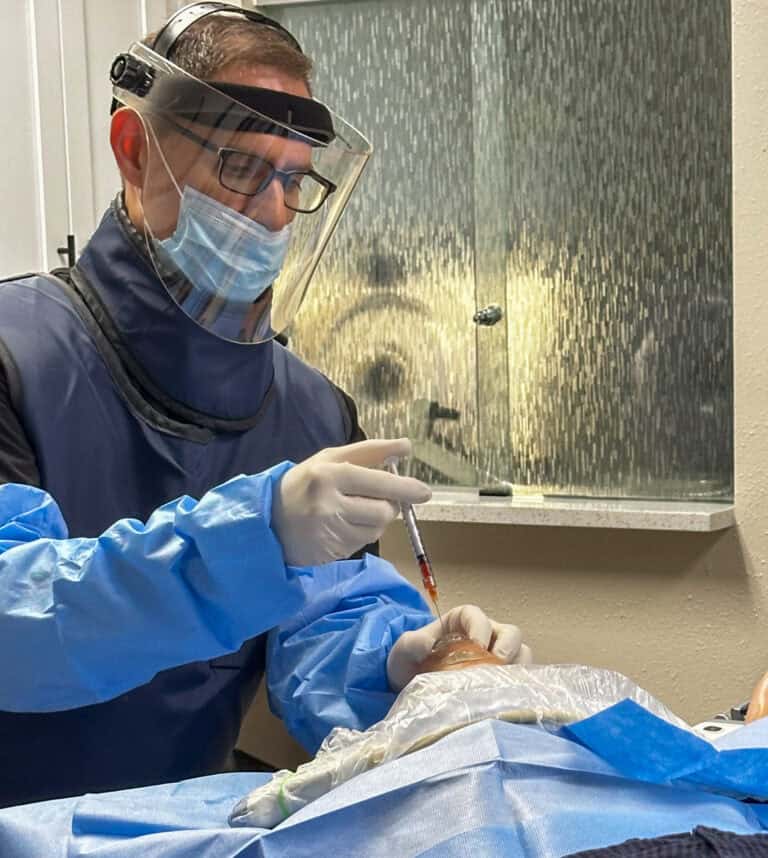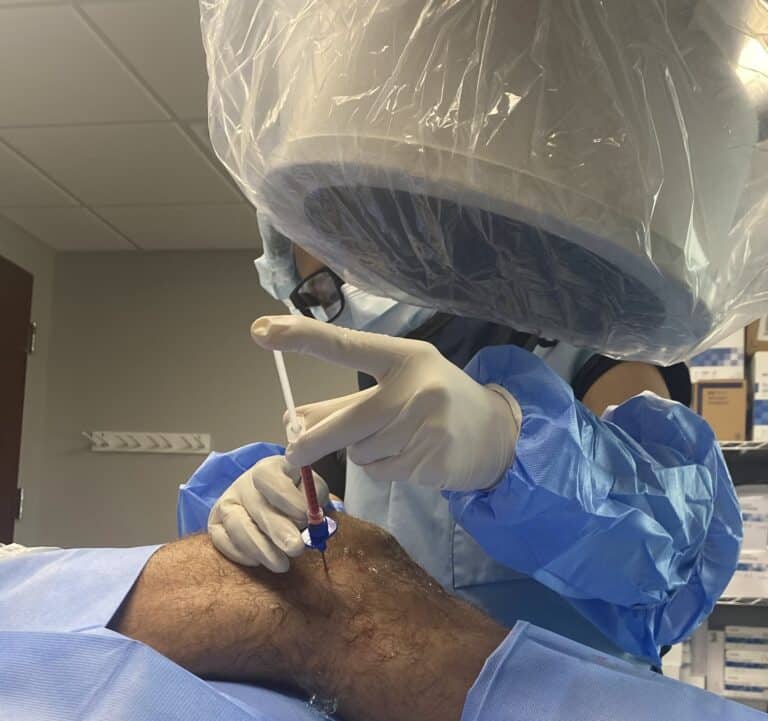Platelet rich plasma, or (PRP) injection is a well-established medical procedure. Popular with both amateur and professional athletes, it is a promising non-surgical option for pain relief and healing. What is PRP? What are the potential benefits of PRP injections? How is PRP obtained? You may be asking some of these questions. And with good reason. Regenerative medicine is a field comprised of PRP and other innovative options which support the body’s natural healing process. Understanding the basics of these options can help you and your doctor decide which are most appropriate for your condition. Following are answers to some of the most common questions about PRP.
What is Platelet Rich Plasma (PRP)?
PRP is a complex composition of multicellular components in a small volume of plasma that is acquired from peripheral blood after separating the blood in centrifuge. After centrifugation, according to the different cellular densities, PRP and their non-platelet cellular constituents can be retrieved from the concentration device.
Platelets
Platelets are like the body’s first responders. They live in the bloodstream and travel to the site of injury where they release growth factors and start the inflammatory process that ultimately leads to healing.
Plasma
Plasma is the largest component of blood. When isolated and removed from blood, plasma is a light yellow liquid which carries water, salts and enzymes and supports many processes. Among other supportive materials, plasma also contains red blood cells, white blood cells and platelets.
How is PRP Obtained?
PRP is composed of naturally occurring components of blood.
PRP for injection is obtained by separating these components from your blood. Different types of PRP exist, each containing varying amounts of red and white blood cells.
When performing the medical procedure of PRP injection, in the interest of supporting non-surgical healing, specially trained Regenexx physicians use quality serum containing very high concentrations of platelets. Experience tells us that the number of platelets in the mix matters. PRP with a higher platelet concentration cause test cells to proliferate more rapidly.
Many physicians use simpler, standardized PRP. Regenexx’s proprietary procedure offers definite advantages.
Two main types of platelet rich plasma that are commonly used for injections include:
- A type featuring a darker shade, indicating richness in white blood cells (leukocyte rich).
- A type which is more amber in color – indicating it is lower in white and red blood cells (leukocyte poor).
More intricate blends of these types are used by different providers, for varied applications.
Basic differences between dark and amber PRP
In studies of arthritis in knees, issues have been discovered regarding procedures involving dark PRP versus amber PRP:
- Generally dark PRP has been shown to be more effective for tendon issues, while amber PRP has been shown to be superior for injecting joints.
- Depending on the structure treated may dictate the concentration and type of PRP that is optimal for each patient.
The Regenexx Difference
Regenexx lab tests indicate that white and red blood cells have an inhibiting effect on the same stem cells the platelets are trying to stimulate in joints. The Regenexx SCP process results in an amber PRP that is far purer than the standard PRP used by many providers of PRP injections.
The SCP Regenexx uses in the PRP injection procedure contains up to 40 times the normal number of platelets. In our lab tests, this higher concentration has been shown to have a positive effect on the stem cells responsible for repairing damaged tissue.
Conditions Proven to Respond Positively to PRP Injections:
- Knee arthritis.
- Hip arthritis
- Ankle arthritis
- Tennis elbow.
- Hip bursitis (tendinopathy)
- Spinal issues.
- Achilles Tendinopathy.
- Plantar Fasciitis
- Rotator cuff tendinopathy
- Carpal tunnel syndrome
- Partial tears of tendons and ligaments.
Other areas of the body are undergoing research, and other applications of PRP hold promise.
Are PRP Results Permanent?
PRP can result in permanent improvement of tendons and ligaments. Long-term sustained improvements in pain and function have been demonstrated in arthritis, although this sometimes requires repeat procedures as arthritis is a progressive process.
Is PRP the Same as Stem Cell Therapy?
No. PRP is a different type of procedure that focuses on products from the patient’s own blood stream designed to encourage the healing process.
A general guideline seems to be that PRP may be a better choice, for mild arthritis and partial tears of tendons or ligaments. But, bone marrow derived stem cells may be more beneficial for arthritis cases that are more severe, as well as larger tendon tears.
The Bottom Line Regarding PRP
- Injections of PRP by Regenexx physicians can potentially help many types of issues that trigger painful symptoms.
- PRP is composed of naturally occurring substances, but there are different types of PRP.
- Consulting with medical professionals highly experienced with PRP treatments offers the best chance for reaping benefits.
The process followed by Regenexx physicians uses a superior injection procedure called Regenexx-SCP. The initials stand for “Super Concentrated Platelets”. Want to know if Regenexx-SCP is right for you? Contact us.










